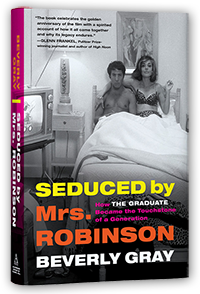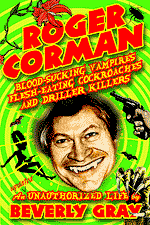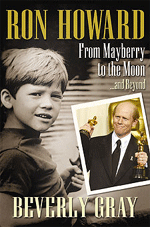Friday, June 17, 2011
From the Earth to the Moon . . . and Beyond
Along with an international group of engineers and space scientists (don’t ask!), I’ve just survived an insider’s tour of NASA Langley Research Center in Hampton, Virginia. An earnest engineering type, showing us around a large hangar full of futuristic space equipment, quipped, “By the way, this is where they filmed the moon landing.” Later, explaining an elaborate contraption that had once helped astronauts practice landing a spacecraft on a simulated lunar surface, a different guide warned that we’d spot clips of the place on the Internet: “This facility is all over those conspiracy sites.”
Some people will never accept that Neil Armstrong and colleagues actually left their footprints on the moon. They’re quick to assume it was merely Hollywood-style razzle-dazzle. And why not? We all know that the special-effects wizards of movieland can convince us of practically anything.
Of course low-budget filmmakers of the Roger Corman ilk have never worried much about depicting space travel realistically. For Roger in his heyday, timing was all. Shooting War of the Satellites a mere three weeks after the Russians launched Sputnik, he was so keen to capitalize on the public’s new interest in outer space that his visuals approached the preposterous. Example: the Corman astronauts, wearing cute little jump suits with lots of zippers, blasted into the stratosphere while sitting comfortably on what look like lawn chairs equipped with seatbelts. Just prior to liftoff, they solemnly adjusted their chairs so that their legs extended into a reclining position. Not exactly convincing, but since there’d been no man in space at that point, who knew different?
By contrast, when Ron Howard shot Apollo 13, dramatizing Commander Jim Lovell’s account of the one U.S. lunar mission that nearly ended in tragedy, he wanted to keep as close to the truth as possible. This mindset was reinforced by NASA’s hope for a factual record of a mission that, though it failed to achieve its original goal, could be seen as a victory of American brainpower against tremendous odds. Astronaut Dave Scott, who served as one of the film’s technical advisors, made the compelling case that human beings would probably not return to the moon for a hundred years. Given that the existing documentary footage of the Apollo 13 mission was far from complete, Scott argued that Howard’s film must preserve for future generations an important episode in the history of manned space flight. So Howard took on the burden of historic correctness, scrutinizing every set detail and every snippet of dialogue for accuracy.
The greatest challenge was conveying a sense of weightlessness within a space capsule. For the first time in movie history, cast and crew were allowed abroad NASA’s zero-gravity simulator, the KC-135. This high-flying Boeing 707, once used for the training of astronauts, could be guided by an expert pilot into a series of parabolic arcs. At the height of each parabola the plane’s occupants would float weightlessly for several blissful seconds, before slamming to the floor when gravity hit them with double its usual force. Filming occurred in 23-second bursts over a grueling series of three-day stretches. Though the KC-135 is known as the "Vomit Comet" for a reason, Howard and his team quickly showed that they were not Hollywood wusses. Howard himself eventually announced a new goal: to be the first director to shoot a movie on the moon. Needless to say, he’s still waiting.
Subscribe to:
Post Comments (Atom)








Apollo 13 is a terrific motion picture. Plainly and simply, if you can tell a story that everyone already knows the outcome to, and have it come out as good and exciting as A13 is - well, you're a hell of a filmmaker. It's also just wild that they got some of those weightless sequences in the Vomit Comet - not so much that they gained permission - but that the cast and crew were ready willing and able to go through those rigors. Guess when Ron Howard's the captain - you'll go with him anywhere. Great post, Ms. Gray!
ReplyDeleteI too agree it's a great film, but back in the day the critics and the Academy gave Howard's work short shrift. Critics were snide about his "Opie" vision of the world (they hadn't quite adjusted to the fact that he'd actually grown up). And though the film was nominated for Best Picture by the Academy, Howard was omitted from the list of best directors. Needless to say, he was more than a bit bummed! I'll let my readers discover for themselves who won that year.
ReplyDelete